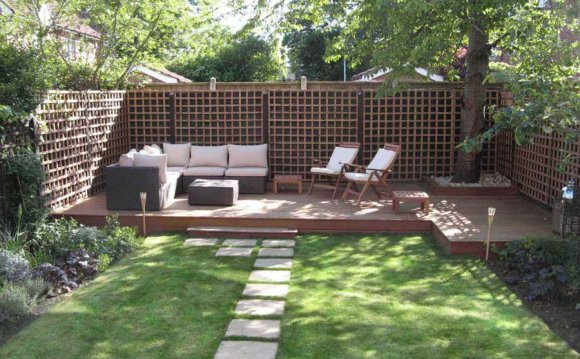
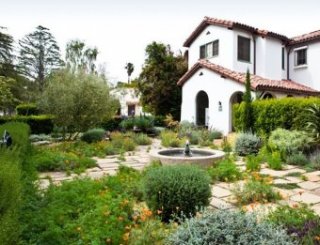 1. Exploit The Slope
1. Exploit The Slope
Homes on steep view lots can lack a powerful entry if the designer is not up to the challenge. All too often this kind of extreme slope is treated as an erosion control application, with ordinary highway planting schemes and hydroseeding. Here the slope is designed to be integral with the structure, serving as its visual foundation. Large boulders help to anchor the soil and provide an opportunity to capture and hold moisture for plants. Species are selected for deep rooting and drought resistance with diverse foliage colors and seasonal blooms. With so much variety in the planting scheme, the entry look and feel will change with the arrival of each new season.
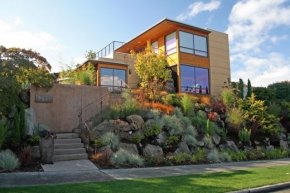 2. Taking Up Grade Inefficiently
2. Taking Up Grade Inefficiently
It's difficult to create a compelling landscape when the front yard is on a straight slope down to the back of curb. Grading smoothly might work for lawn, but today's modern landscapes offer new opportunities. Here the series of benches graded into the slope would be rather ordinary if it wasn't for the low walls that offer more options in the layout. They allow grade to be taken up more abruptly in some spots, and thereby creating level terraces and linear pockets for planting. The grey walls also provide a really dramatic background for simple massed plantings where the texture and color are sure to stand out day and night A straight set of stairs begs symmetry, but here the offset entry walk with its integrated riser lighting makes it clear where to go without the clutter or dated look of freestanding walk light fixtures.
3. Green Experience
Landscapes for plant lovers offer opportunities to grow favorite species front and center. This walled front yard is ideal for creating more outdoor space for living and gardens. Where space is a premium, vertical wall planting systems allow a planted border to go up rather than out, demanding little ground space for such an incredible display. A simple entry is dominated by this wall of exotic plants to augment the subtle Asian design with its beautiful gate and horizontal stepping slabs. Put your best foot forward so your guests can share your own plant passions by creating a very green experience in a modest front entry garden.
4. Front Door Focus
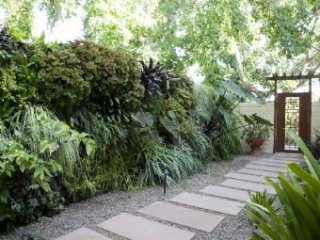 The facade of this rambling southwestern home is broad and sun drenched, but the location of the front door may be ambiguous to some. Arizona flagstone paving extends from the front porch to the street, growing wider as it goes to meet the driveway where guests park. This provides lots of surface paving for decor and pots. It also carries the same style as the interior and front porch through to the parking area. Drought and heat resistant species along the edges of this walk helps to blend the earth tone hardscape into the fine surface gravel that extends throughout the planted areas for a feeling of space much larger than it actually is.
The facade of this rambling southwestern home is broad and sun drenched, but the location of the front door may be ambiguous to some. Arizona flagstone paving extends from the front porch to the street, growing wider as it goes to meet the driveway where guests park. This provides lots of surface paving for decor and pots. It also carries the same style as the interior and front porch through to the parking area. Drought and heat resistant species along the edges of this walk helps to blend the earth tone hardscape into the fine surface gravel that extends throughout the planted areas for a feeling of space much larger than it actually is.
5. Surprise Lures Guests
For many homes that lack sufficient space or a comfortable exposure for outdoor living in the back yard, reclaiming front yard as a fresh living space is the ideal solution. Here a semi-transparent grid lattice fence draped in cooling green vines creates a sense of mystery for the visitor who longs to enter a secret entry garden. When they step inside the bright day is softened and the spaces are inviting. The designer set this seating area off to the side so that the view and path from the gateway to the front door remains the primary experience while the living space is secondary.
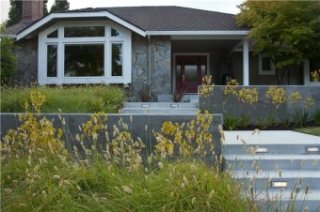
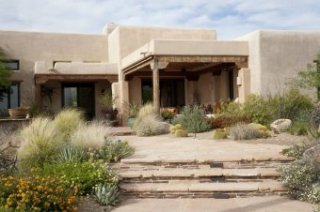
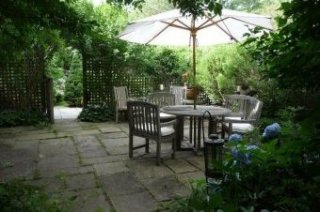
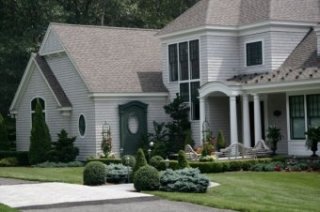
6. Use enamel cookware in the outdoor kitchen
Though it is believed that chefs prefer to use cast iron cookware, the truth is that there are a lot of those who prefer enameled version. The thing is that enamel cookware is much easier to clean. Furthermore, there is no seasoning issues associated with enamel-coated cast iron. Such cookware is absolutely safe as its inner coating prevents iron leaching into your food. One more advantage of an enameled coating is that it provides non-stick properties. Enameled cookware pieces are available in a variety of colors, so it is quite easy to find the piece that will complement existing colors in your kitchen design.
















